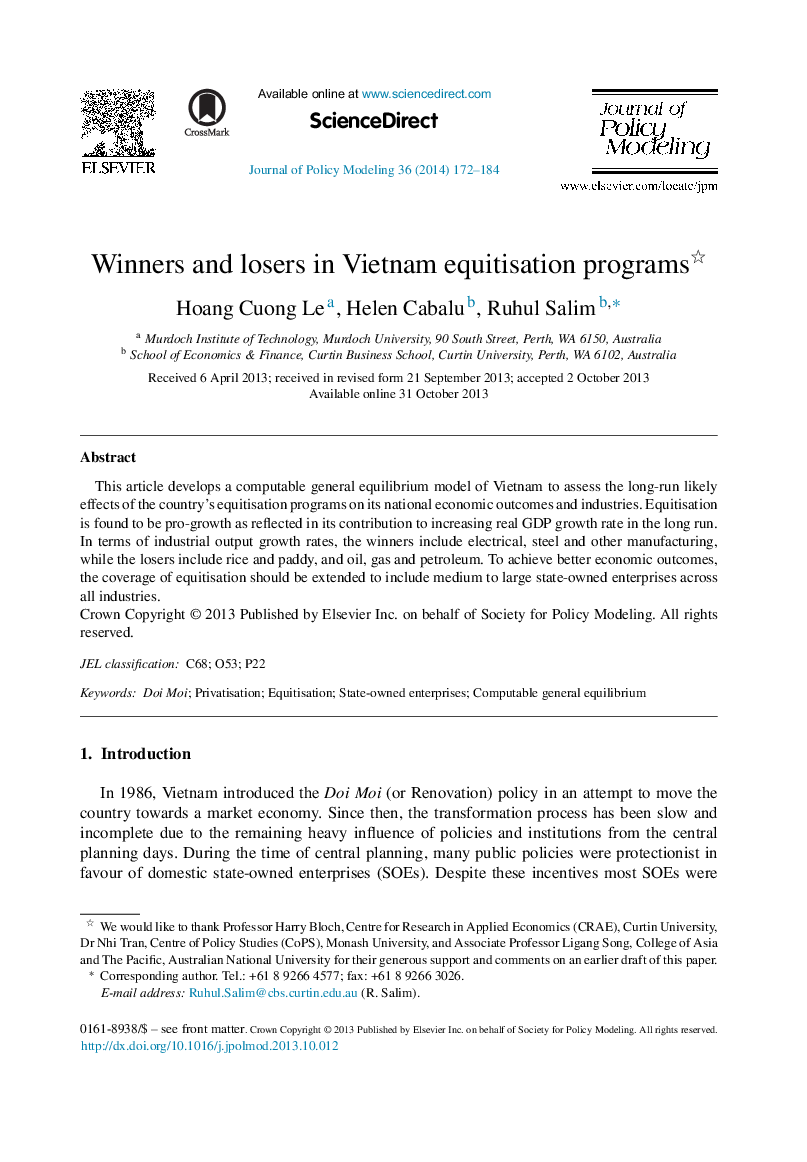| Article ID | Journal | Published Year | Pages | File Type |
|---|---|---|---|---|
| 968343 | Journal of Policy Modeling | 2014 | 13 Pages |
Abstract
This article develops a computable general equilibrium model of Vietnam to assess the long-run likely effects of the country's equitisation programs on its national economic outcomes and industries. Equitisation is found to be pro-growth as reflected in its contribution to increasing real GDP growth rate in the long run. In terms of industrial output growth rates, the winners include electrical, steel and other manufacturing, while the losers include rice and paddy, and oil, gas and petroleum. To achieve better economic outcomes, the coverage of equitisation should be extended to include medium to large state-owned enterprises across all industries.
Related Topics
Social Sciences and Humanities
Economics, Econometrics and Finance
Economics and Econometrics
Authors
Hoang Cuong Le, Helen Cabalu, Ruhul Salim,
